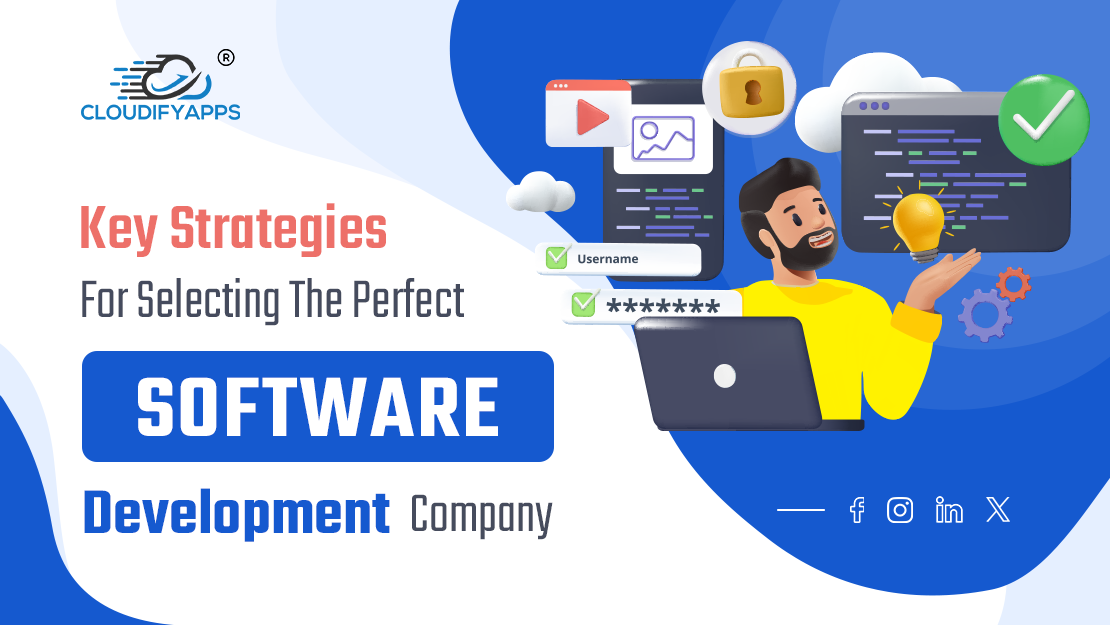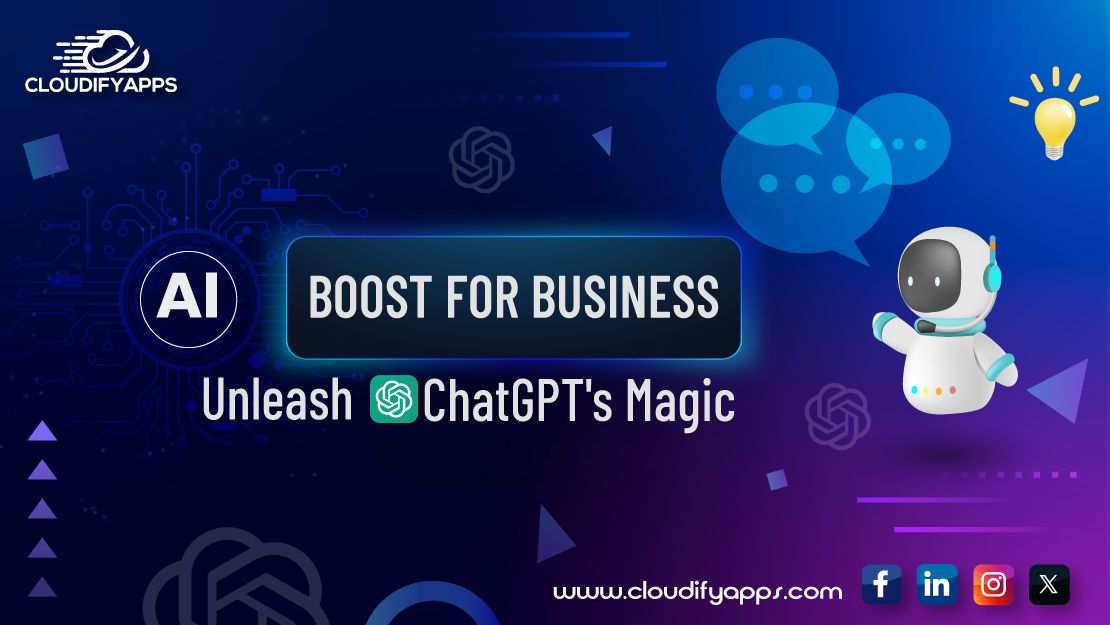
Benefits of Opting For Serverless App Development
Introduction:
An older mobile and web app development company collaborating with a business required a number of on-site servers. All these servers' combined tasks helped the developers reach the tech goals that the business demanded. But with technological advances, app development is quickly adopting a serverless structure.
Earlier, the entire software architecture with several databases, referred to as 'servers,' was central to the proper building and deployment of apps. But Development and Operations (DevOps) engineers gave this structure a new look by working towards better container orchestration. This makes the application scalable, as it adapts to the various stages of a growing business.
Serverless architecture in DevOps services uses cloud technology to provide scalability. It also strengthens the security options of the app and boosts its performance for a better user experience. It can cater to the viewer's specific demands promptly across various platforms and devices.
What is Serverless Architecture?

Serverless architecture is basically a cloud computing execution model. Several cloud providers grant machine resources to their clients. So, technically speaking, the business client's actual servers are the cloud provider's responsibility since the business site does not house the server.
Serverless technology has resulted from the research of two different but often overlapping IT fields - Development and Operations, also known as DevOps services. The technology requires the business client to only run the code as computing is done in short bursts of activity. The cost of computing in this architecture depends solely on the client's specific resources rather than a flat price rate.
Does Serverless Really Mean a Lack of Servers?
In all actuality of the term, 'serverless' is a misnomer. A mobile and web app development company can never go on in the absence of servers. The cloud providers need the servers to allocate storage and execute the code.
However, the essence of the term lies in how the client's development team does not need to worry about maintaining physical servers, virtual machines, or containers by themselves. Essential functions like configuration, management, capacity planning, scaling, and fault tolerance of the servers are carried out by cloud providers like Amazon, Google, and Microsoft.
The cloud ecosystem allows the client to realize their business goals by accessing the functions and services that the cloud provides. This hastens the process, which would have taken an exhausting length of time otherwise. Clients can access more advanced features when they require them and pay accordingly as their business grows.
How is FaaS Related to a Serverless Model?
Function as a Service (FaaS) refers to a part of cloud technology where the client does not have to deal with the usual complex infrastructure of building an app in DevOps services. In contrast to the Platform as a Service (PaaS) model that requires at least one running server process, a properly cached FaaS application does not require any server process being run constantly to handle requests within milliseconds.
Serverless app development is made possible by the FaaS cloud services that can be accessed by a mobile and web app development company. The vendors providing serverless models offer to compute runtimes of FaaS to run application logic without storing data. They are easy to code since serverless runtimes support common machine languages like Java, PHP, and Python.
The application is scaled automatically when a new cloud function is added to the service. Its return results can trigger another service to scale seamlessly along with the business. This lets the client have full control over the resources they are using for the app development.
The Lambda function on Amazon Web Services (AWS) was one of the first FaaS models offered to the public. Google Cloud Functions, Microsoft Azure Functions, IBM/Apache's OpenWhisk, and Oracle Cloud Fn are the various other public FaaS models. A DataDog survey conducted in 2020 found that more than half of AWS users have taken to implementing the serverless AWS Lambda Function as a Service (FaaS) in their businesses.
How is BaaS Related to a Serverless Model?
Backend as a Service (BaaS) is the model that a serverless architecture follows to automate backend development. DevOps services manage the cloud infrastructure in a back-end model as the front end interacts with the backend via APIs. BaaS services provide notification management, scalable database, user management, and authentication services.
BaaS services allow developers to focus on the frontend models. They are not required to be built or maintained by the developers, allowing them to go into serverless app development as well. Some of the most popular and useful BaaS service providers are Azure Mobile Apps, Firebase, Cloudkit, and AWS Amplify.
BaaS provides cloud storage for user-generated content. It supports remote updating by which the application can be scaled remotely by a mobile and web app development company, without the client directly dealing with the backend server. However, the construction of backend server functionalities depends on the provider, not the client.
What are the Benefits of Serverless App Development?

With the constant innovations in the IT sector, it is no wonder that new technology will take over instantly if it is proven to be the more effective solution compared to its older counterpart. The same has been the case for serverless computing in the DevOps services. Its number of benefits offered to the developers has quite surpassed the challenges faced.
The O'Reilly serverless survey of 2019 reported that at least 40% of the 1500 IT professionals who participated in the survey worked at companies with a serverless architecture. The statistical data proves that the technological shift is taking place in favor of serverless computing. The ease provided in the building, maintaining, and scaling of apps has remained unmatched for a while now.
Let us take a closer look at the advantages of using serverless app development:
Seamless Computing With CI/CD:
Serverless computing depends on two very important concepts integral to DevOps services - Continuous Integration (CI) and Continuous Delivery (CD). They deal with the repository of code deployment in the cloud and are responsible for the dualism in serverless technology.
Continuous Integration (CI):
The practice of automating the code integration from various contributing sources into one software project is called Continuous Integration. CI is the best mechanism to integrate and validate all kinds of alterations.
With the feature of 'version control,' implementing small changes to the code is made possible by CI. Any developer possessing the required access to it can add new features without much of a hassle. It supports flawless synchronization, resulting in faster code releases when compared to a non-CI environment.
Continuous Delivery (CD):
The other most important part of a DevOps services pipeline of an automated software release is Continuous Delivery. CD takes up the work from where CI has left it off. Its Function lies in the automation of the app delivery to its designated environment of infrastructure.
CD offers an automated mechanism of implementation of code changes in case of tasks performed in multiple environments. This is common in the case of a development and testing environment. This entire cycle of CI/CD enables the scalability of organizations using them. As the business grows, the companies using the CI/CD pipeline can scale their engineering team size, codebase size, and infrastructure seamlessly.
The final phase of this beneficial pipeline is Continuous Deployment, by which the software artifact is automatically launched and distributed to end-users. This entire process is constructive for developers since product teams can test and sanction product designs and other ideas faster on an optimized CI platform as it is made available by serverless computing.
Cost-effective Approach:
Companies have to rent or purchase a fixed quantity of servers for the tech work. On top of that, virtual machines must be kept online all the time, even when the business app is relatively inactive. This racks up quite a lot of the budget spent after server maintenance.
With serverless technology, the client of a mobile and web app development company only has to pay for the features they are using when their app is online. In fact, it can be more cost-effective than the services provided by an autoscaling group. The more efficient bin-packing of the machine resources is the reason behind this.
The other cost-effectiveness apart from the pay-per-request approach is the considerably less generation of waste. It supports greener computing with fewer resources. Going serverless also helps with the monitoring of the app to avoid any potential downtime.
Quick Development Time With Better Scalability:
Since the apps built by any mobile and web app development company using the serverless approach can be scaled automatically, the developers can share resources much faster than before. There can be no more cases of bottlenecks since changes are easily integrated and validated during app development to accommodate the growth of the business.
With such automation of code changes, the steps between testing and deployment coming from various environments get even shorter. This boosts the workflow and promotes cooperation among multiple environments engaged in a single task of the team. With the 'modularity cooperation model,' major functions are broken down into blocks of smaller tasks, increasing the team's productivity.
Systems native to cloud computing, such as serverless architecture, can be scaled down and up. This handy feature is called elasticity rather than scalability. So, if a company needs to scale down its app development process, then the client can easily choose to do so.
More Marketing Time and Budget:
The frictionless development process involved in a serverless approach gives the developers more clarity and control over their tasks and workflow. It reduces production times by automating changes. Updating the systems is never a hassle since everything is connected with the help of automated technologies.
With such swift development time from code to product, the businesses will get more time to distribute and market the app across various platforms. The cloud DevOps services already come with multiple pre-written features that the client can choose from - so the coding process is relatively quick.
Besides, since serverless technology is more cost-effective, the app marketing sector can get a bigger budget allocation from the parent company. This increases the reach of the app, attracting more investors and letting the business grow.
Improved Productivity and Flexibility:
A serverless app is easier to implement for a mobile and web app development company than the traditional manner. With FaaS, the developer no longer has to be concerned about multi threading or dealing with HTTP requests directly.
This ease leads to rapid innovation. The immediate results boost developers' morale and motivate them to move on to the next project quickly. Serverless computing knows no bounds as the developers can make new additions and restructure the app whenever needed.
Customer Satisfaction:
The main goal of a business app is audience engagement and satisfaction. With the help of serverless architecture, a business can reach more viewers in a very short time. This creates a unique brand experience in the user's mind, building customer loyalty. It increases the chances of a viewer coming back to visit the app over and over again rather than abandoning it.
Apps built with a serverless approach can launch new features quickly, drawing the attention of their customers. Any minor bugs or shortcomings can be fixed instantaneously without bothering a need for infrastructure. This constant betterment of user experience by the mobile and web app development company polishes the app to finesse, earning 100% customer satisfaction.
Conclusion:
According to the O'Reilly survey of 2019, not only small businesses and start-ups but large-cap companies and industries have also picked up on serverless DevOps services. More than 67% of this demographic claimed that their organizations have been most successful with a serverless approach.
With proper monitoring, serverless technology should be a breeze for a mobile and web app development company to work with. It should be built in a way to be reliable at any scale for faster development. The serverless framework allows businesses to focus more on the end-user experience to gain their ground and stay relevant in the highly competitive commercial sector.
Popular Tags
Recent Posts
How To Choose The Right Software Development Company For IT Resource
ChatGPT for Commercial Use: How to Enhance Any Business With AI
Enhancing AI with Retrieval-Augmented Generation for Precision and Relevance
Smart Retailing with ChatGPT: 2023's Supply Chain Breakthroughs
We are at























